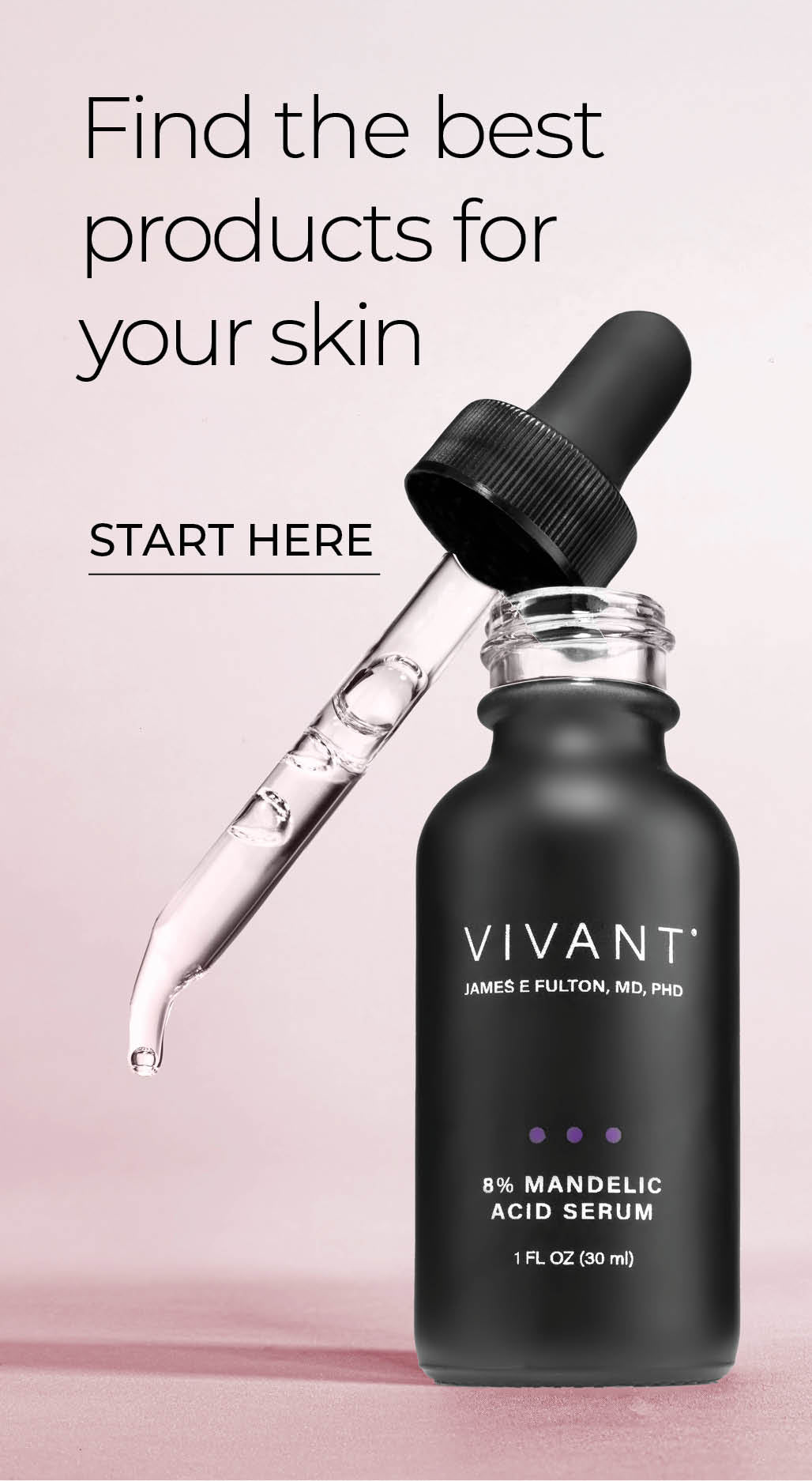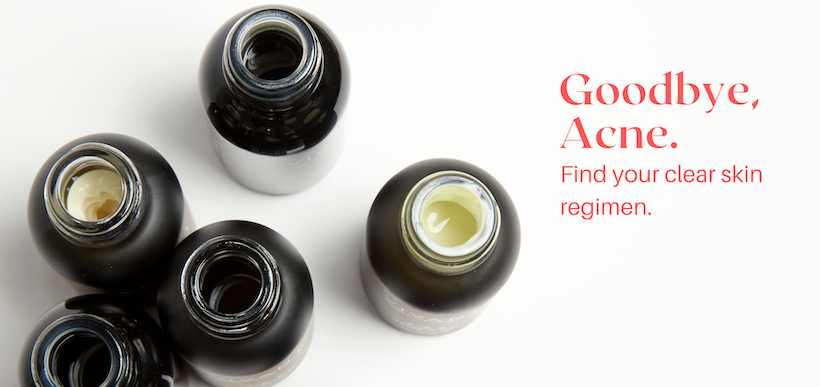Cystic Acne: Getting Clear Without Accutane (Isotretinoin)

When Accutane debuted in 1982, it was hailed as a miracle drug. It provided complete remission of severe cystic acne for 85% of patients within five months. But years of controversy followed as the drug was linked to serious risks, including depression, psychosis, suicide, miscarriage, and birth defects. Those risks, coupled with unpleasant side effects like excessive peeling and extreme dryness of the nasal cavities and lips, made Accutane a drug of last resort.
So, are there effective alternatives to Accutane (or the generic isotretinoin as it's now known) that don't come with a laundry list of caveats? Read on for the best way to clear cystic acne without isotretinoin (Accutane). First, a little context to help better understand your options.
Table of content
 Why do so many topical treatments fail to clear cystic acne?
More tips for clearing cystic acne:
Why do so many topical treatments fail to clear cystic acne?
More tips for clearing cystic acne:
What is isotretinoin (Accutane), and how does it work?
Isotretinoin is one of the most widely prescribed treatments for severe acne. It's a form of vitamin A that increases cellular turnover and exerts a powerful effect on the sebaceous glands to reduce oil, inflammation, and bacteria in the pores. It's effective but comes with long-term health risks and unpleasant short-term side effects. The Accutane brand was discontinued in the U.S. in 2009. Isotretinoin, the generic form of Accutane, is what is prescribed now.
Is isotretinoin (Accutane) the same as tretinoin (Retin-A)?
Both isotretinoin (Accutane) and tretinoin (Retin-A) are forms of vitamin A. Tretinoin (Retin-A) is the pure form of retinoic acid. It was co-developed by Vivant formulator Dr. James Fulton to treat severe acne but proved to be highly effective for reducing wrinkles and hyperpigmentation as well. The side effects from tretinoin (Retin-A)—redness, irritation, dryness, peeling—are more intense than OTC retinoids but mild compared to isotretinoin (Accutane).
Isotretinoin (Accutane) is an oral drug, while tretinoin (Retin-A) is a topical drug that comes in a cream or gel form. Both require a prescription.
Can non-prescription retinoids provide comparable results to isotretinoin (Accutane)?
The term retinoids encompasses all vitamin A derivatives and, within that, a huge amount of variation in terms of effectiveness. The most potent form of topical retinoids (tretinoin) is pure retinoic acid.
Vitamin A derivatives, such as retinol (ROL), retinyl palmitate (RPalm), and retinyl propionate (RP), must be converted by the body to retinoic acid. Their effectiveness hinges on how efficiently and quickly the body can make the conversion, which comes down to molecular structure. If the compound is large, as most vitamin A derivatives are, it can't reach its cellular target, meaning results are minimized and take longer to appear.
After co-developing Retin-A, Dr. Fulton turned his attention to developing an effective non-prescription vitamin A that would provide the greatest benefit with the least irritation. Vitamin A propionate, just three-carbon molecules away from Retin-A, was the result. Its unique metabolic profile means vitamin A propionate delivers greater bio-activity and consistently better results than retinol and retinyl palmitate.
Tretinoin (Retin-A) ranges in concentration from relatively mild 0.01 percent to 0.1 percent. A mid-strength 0.05 percent tretinoin cream or gel is the most common prescription. The strength of Vivant's Exfol-A Forte is comparable to the .05 dosage of Retin-A, making it an excellent topical alternative for those looking to avoid the risks associated with isotretinoin.
What's the best regimen for clearing cystic acne without isotretinoin (Accutane)?
Exfol-A Forte is our most advanced corrective serum. In addition to vitamin A propionate, it contains glycolic acid, salicylic acid, and lactic acid. The pairing of AHAs with vitamin A brings enhanced exfoliation to accelerate the peeling of impactions and reduce the chances of scarring.
If you have never used vitamin A therapy, or if it has been a while, we advise starting at a lower percentage to allow your skin to acclimate. Derm-A-Gel is our starter therapy. If your acne is very severe, you can work your way past Exfol-A Forte to Clear Body Therapy, equivalent to .1 Retin-A.
In addition to vitamin A therapy, your regimen should include benzoyl peroxide to kill acne bacteria and flush the pore. Benzoyl peroxide is an antimicrobial agent that does not result in resistance like some other antibacterial treatments. It works by releasing oxygen into the pore to kill acne bacteria, while benzoic acid stimulates exfoliation to unplug pores. It also reduces inflammation, the prime driver of acne lesions.
Together, vitamin A propionate and benzoyl peroxide offer the two components that make isotretinoin (Accutane) so effective: accelerated cell turnover and regulation of oil, inflammation, and bacteria in the pores.
For sensitive or hyperpigmentation-prone skin, mandelic acid is an excellent alternative to the benzoyl peroxide/vitamin A propionate pairing. Mandelic acid is an alpha-hydroxy acid with antibacterial, anti-inflammatory, and melanin inhibiting properties.
When Dr. Fulton first began treating patients in his acne clinics more than 30 years ago, the results achieved with his formulations were unprecedented.
In 2018, Vivant co-founder Sara Fulton described the excitement over the Vivant treatment model. "We were getting referrals from the Cleveland Clinic and Mayo Clinic. Word was getting around that we were having success without using antibiotics and without using Accutane. We cleared patients using topicals researched and formulated by Dr. Fulton."
 Why do so many topical treatments fail to clear cystic acne?
Why do so many topical treatments fail to clear cystic acne?
Cystic acne starts deep in the pore due to hormones stimulating the oil glands or, in the most severe cases, as the result of a break in the follicular wall. The treatment must address sebum production, inflammation, acne bacteria, hyper-keratinization (an extreme buildup of dead skin cells), and follicular repair. Most topical treatments fail because of the inability to address all these issues, inadequate formulation, the wrong actives, or too low a percentage of actives.
Cystic acne is the most resistant type of acne. With time, consistency, and the right regimen, clear, healthy skin can be achieved without resorting to potentially harmful drugs.
More tips for clearing cystic acne:
Icing acne lesions will constrict blood vessels and reduce the swelling. It will also enhance the skin’s ability to absorb treatments.
We recommend minimizing the use of moisturizers during active treatment of cystic acne to allow impactions to peel. If your skin becomes overly dry, use Allantoin Sedating & Hydrating Lotion, which has healing and keratolytic properties, or Totaloe Calming and Hydrating Gel.


Comments